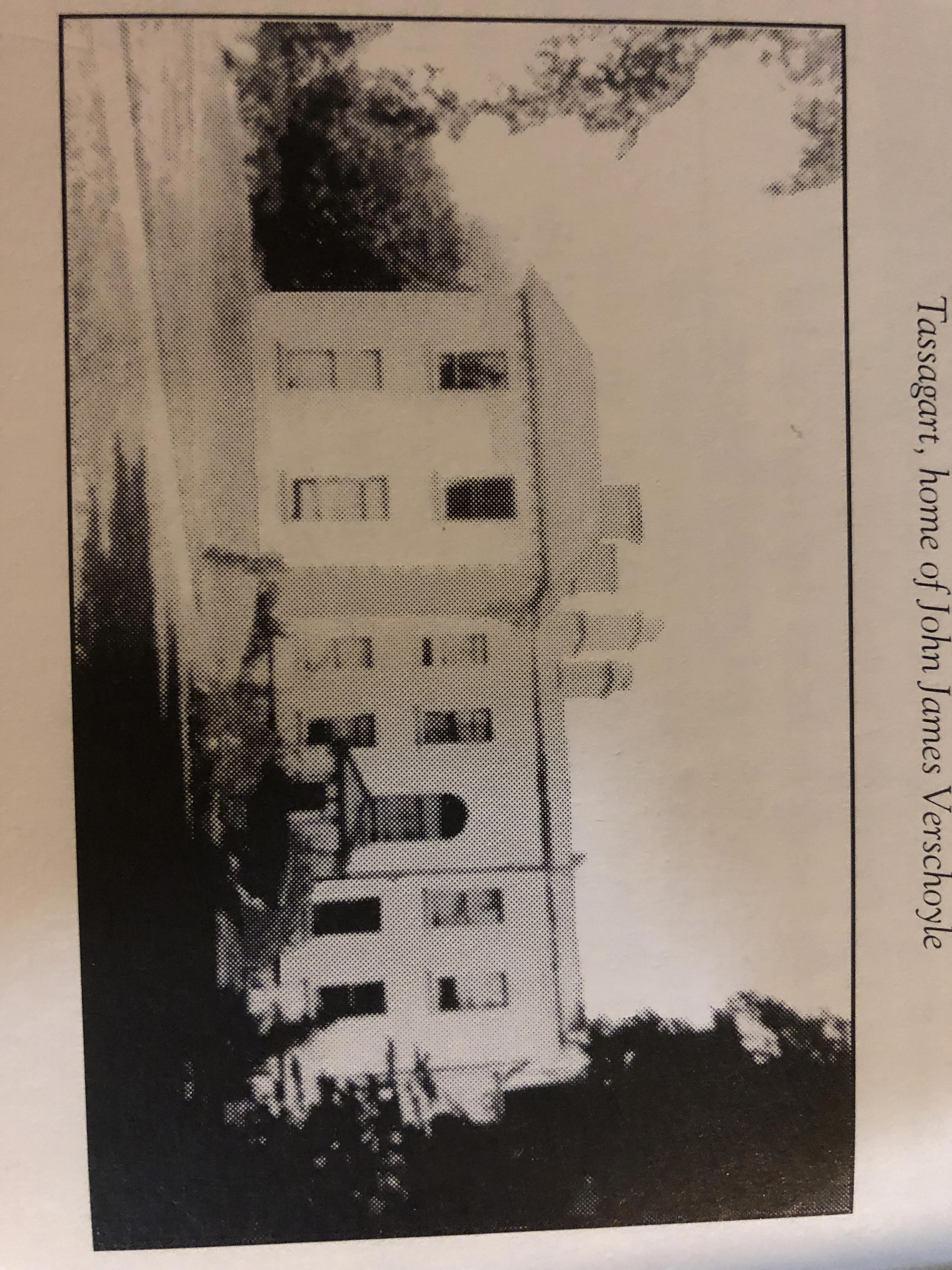Rev. John Verschoyle, Saggart (1854-1916).
John Stuart Verschoyle was born at Tassaggart in the village of Saggart in the year 1854. His father was John James Verschoyle (1805-1891), his mother Catherine Helen Foster (1824 -1901). John Stuart attended Cambridge, was ordained and appointed curate in Marlebone. Later he became a rector in Somerset, where he remained until his death in 1916. He had been very active in his own pursuits in England. He became editor of the Fortnightly Review. He worked on the Evening News with Frank Harris. He was very much involved in “The Scramble for Africa” and was a staunch advocate of British mining rights in South Africa. He knew Cecil Rhodes and wrote a laudatory biography of him. He became involved with the “Victoria Street Society” for the protection of animals from vivisection. We are nowadays appalled at the idea of live animals being cut up without any form of anaesthetic. Those in favour of the barbarity at the time justified it on the grounds that it led to advancement in medical treatment for human beings. John was a serious student of ancient civilisations, editing a book entitled “History of Ancient Civilisations” by Ducondray. In this work he showed that he well understood his subject and added much of himself to the finished article. It was said at his death that he had possessed great talent in poetry and literature but, sadly, had not reached his full potential.
Being the elder son he had inherited the Verschoyle Estate at Saggart on the death of his father John James in 1891. John James had not been born at Saggart, but on his marriage to Catherine Foster his father had bought him the house and estate as a wedding present. (Not too bad! I remember getting a few clocks and sets of cutlery and china.) By this time, however, John Stuart had made a life for himself in England and had no interest in being a landlord in Ireland. It seems, in fact, that he found the system of land usage and tenancy distasteful to his sensitive nature. Besides, tenants were agitating for reductions in rent and in some cases making dire threats against their landlords. The Board of St. Patrick’s Hospital had washed its hands of the tedious and troublesome day to day running of the estate some years previously and had leased it to their former agents the Verschoyles. (Later in 1912 they would sell their interest in the estate to the family.)
An entry in a minute book of the Dublin & Blessington Tramway Company tells us that that Rev John Verschoyle had conveyed the estate to Mrs Verschoyle Campbell, his sister, on May 28th 1894. The Tramway Co. had dealings with the family as the tramline traversed the estate from the Embankment to Crooksling. Water at the Embankment had been leased to the company for 1/- a year, and a small parcel of land was purchased from a Verschoyle tenant, John Hanlon, for £30. Water was also acquired at Crooksling for a tank there.
Before a deal had been struck with Mrs Campbell Rev. John had engaged North Auctioneers to put all up for sale. The prospectus and its maps give us great detail of what was at Tassaggart at the time and the extent of the lands and buildings. There was a total of about 830 acres; the house had 9 bedrooms and 6 servants’ bedrooms, as well as all ancillary rooms you would expect in a commodious gentleman’s residence. Out doors was a brick lined walled garden with walls 16 feet in height, stabling for 14 horses, a dairy, fowl houses etc. etc. etc. The lands were of clay upon limestone with some of the richest fattening pastures in Ireland. They were well watered and timbered with beech, oak, ash, elm and lime. All in all the property would be an excellent and remunerative investment.
Family charges on the estate were:
- A jointure for the life of a lady in her 71st. year at £415 per annum. (This lady was Rev. John’s mother Catherine Foster who would live for another 7 years).
- A charge of £5,000 at 4% payable to the younger brother and sisters of the vendor. Annual interest was £200.
We have no record of the monetary arrangement made between Rev. John and Mrs Verschoyle Campbell. However we can estimate the estate’s value on the open market from the annual rentals from tenants plus value of house.
If we multiply the annual rental by, say 18 years, we get a starting figure of (£1,300 X 18) £23,400 plus £2,500 for house, making £25,900. Take for the jointure and payments to a brother and sisters, a sum of £8,000. We are now left with £17,900. Non payment by tenants and reductions in rent would further eat into profits. Taxes, maintenance and administration added up to more expenditure. The value of landed estates had been greatly reduced because of the ongoing conflicts between tenants and landlords. Tenants were refusing to pay what they considered were unreasonably high rents. So perhaps an offer in the region of £13,000 would have been a fair one from his sister Mrs Verschoyle-Campbell, more so as it was remaining within the family.




